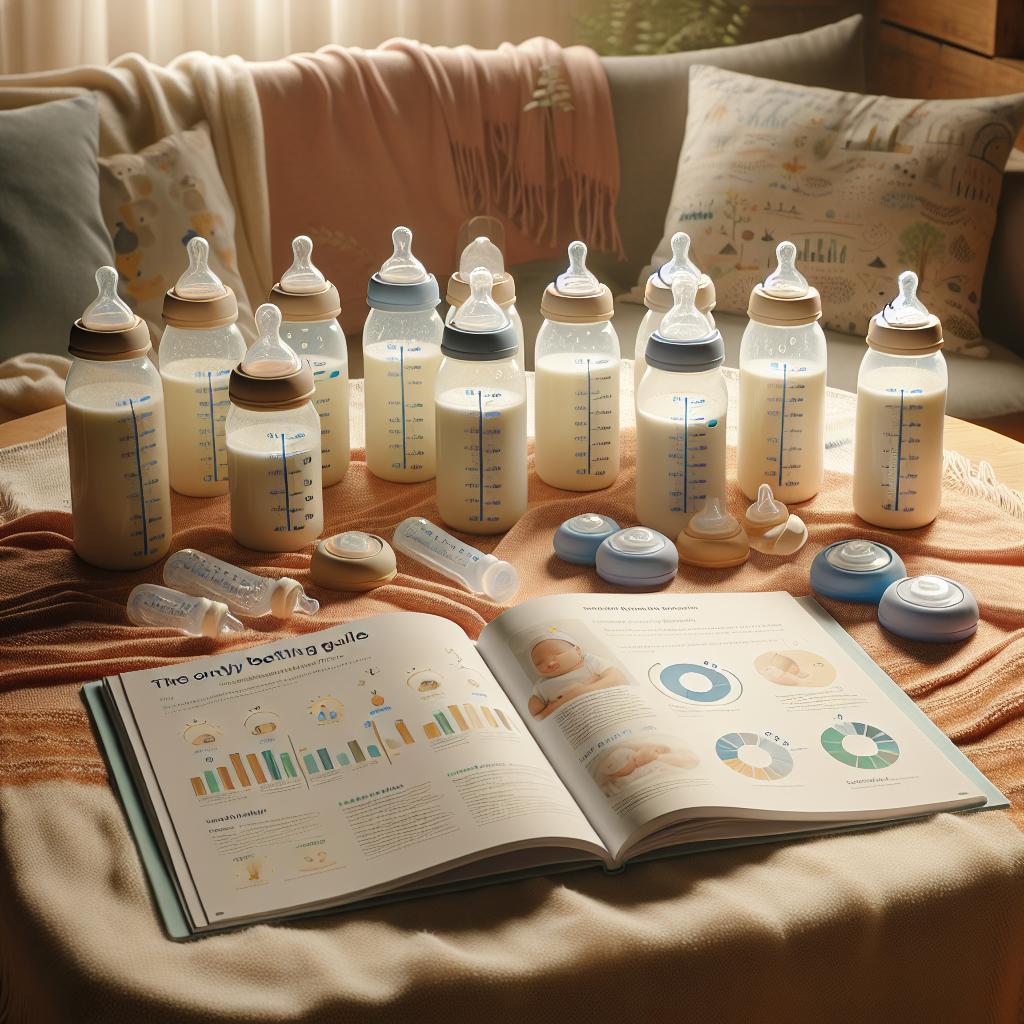Understanding Bottle Acceptance
Transitioning your baby from breast or initial feeding methods to a bottle is a significant milestone. However, it isn’t always an easy process; some babies resist the introduction of a bottle. This post will guide you through helping your baby accept the bottle, making feeding times less stressful and more enjoyable for both of you.
Why Do Babies Resist Bottles?
Understanding why your baby might be resisting the bottle is the first step to overcoming this challenge. A significant cause of this resistance is that babies are born with an instinct to suckle at the breast. The sensations, smells, and tastes associated with breastfeeding are familiar and comforting to them, making it a routine they prefer. According to WhatToExpect, babies can also resist bottles due to nipple confusion, the abrupt introduction of the bottle, or simply preference.
Strategies for Helping Baby Accept the Bottle
Fortunately, there are various strategies that parents can use to help their infants with bottle acceptance. Here is a list of techniques that have been found effective:
- Choose the Right Bottle: It’s important to select a bottle that closely mimics the breast. This similarity will make the transition smoother for the baby. Organically shaped, soft silicone bottles can simulate the natural feel of a mother’s breast.
- Introduce the Bottle Gradually: Instead of completely replacing breastfeeding with bottle-feeding, start by introducing the bottle gradually. Begin with one bottle feed per day, then increase the frequency as your baby gets used to it.
- Use Breast Milk: To make the new feeding method feel more familiar, fill the bottle with breast milk.
- Get Someone Else to Offer the Bottle: Because babies associate their mothers with breastfeeding, it may help if someone else like the father, a sibling, or a caregiver initially introduces the bottle.
You can find further reading on how to handle a baby crying at bottle time on Bottle Wizard.
Patience is Key
Remember, patience is key in helping a baby accept a bottle. Allow your baby to hold the bottle, play with it, and get used to it in their own time. Try not to force the bottle on your baby and instead allow them to take it at their own pace. The more relaxed the environment, the easier it will be for your baby to adapt.
When to Seek Professional Help
If your baby is consistently refusing the bottle and losing weight as a result, it’s time to consult a lactation consultant or pediatrician. Professional guidance can be extremely beneficial in these scenarios. Feedeatspeak offers advice from feeding specialists who may be able to help.
Remember, every baby is unique. Helping your baby with bottle acceptance might take time and a lot of patience. It’s completely normal for your baby to resist the bottle initially; with time, patience, and the right techniques, they will soon adapt to their new feeding routine.
Helping Baby Accept Bottle – Bottle Wizard
More Tips for Easing the Transition
Further tips that can ease the transition process include:
- Warm the Milk: Do not serve cold milk straight from the refrigerator. Warm the milk to mimic the temperature of breast milk, which is more enticing to the babies. Ensure it’s not too hot to avoid burning the baby.
- Change the Feeding Position: Since breastfeeding and bottle-feeding require different body positions, experimenting with different positions can help your baby adapt. Holding your baby in a standard feeding position might confuse the baby and make them try to breastfeed instead.
- Offer the Bottle during Playtime: Incorporate the bottle during your baby’s playtime. This will familiarize them with the bottle, and they’d be less intimidated to use it during feeding times.
- Use Distractions: Try to distract your baby during the feeding process by singing, rocking, or even using a mobile. This trick can help take their mind off the change in their feeding routine.
As every experience varies, it can be beneficial to read testimonials and tips from other parents experiencing the same issues. HealthPartners’ blog post titled “Baby won’t take a bottle? Here’s help” provides some first-hand tips that may prove useful.
How Long Should it Take?
It’s hard to set an exact timeline on when a baby should completely switch to a bottle. For some, it’s a matter of days, while for others, it might take weeks. So, don’t let this discourage you. Keep in mind that patience and persistence are paramount. WebMD provides insights into why a baby might refuse a bottle and gives further advice on the topic.
Final Thoughts
Moving from breast to bottle feeding is a significant milestone for both the baby and the parents. It’s critical to stay patient and to introduce bottle feeding gradually, using carefully chosen and appropriate bottles. While some babies will resist initially, persistence and calmness usually pay off.
Further Resources
There are numerous resources available online that offer further guidance:
- NCT’s post provides additional bottle feeding tips for breastfed babies.
- HealthyChildren.org guides parents on how to discontinue the bottle when the time is right.







